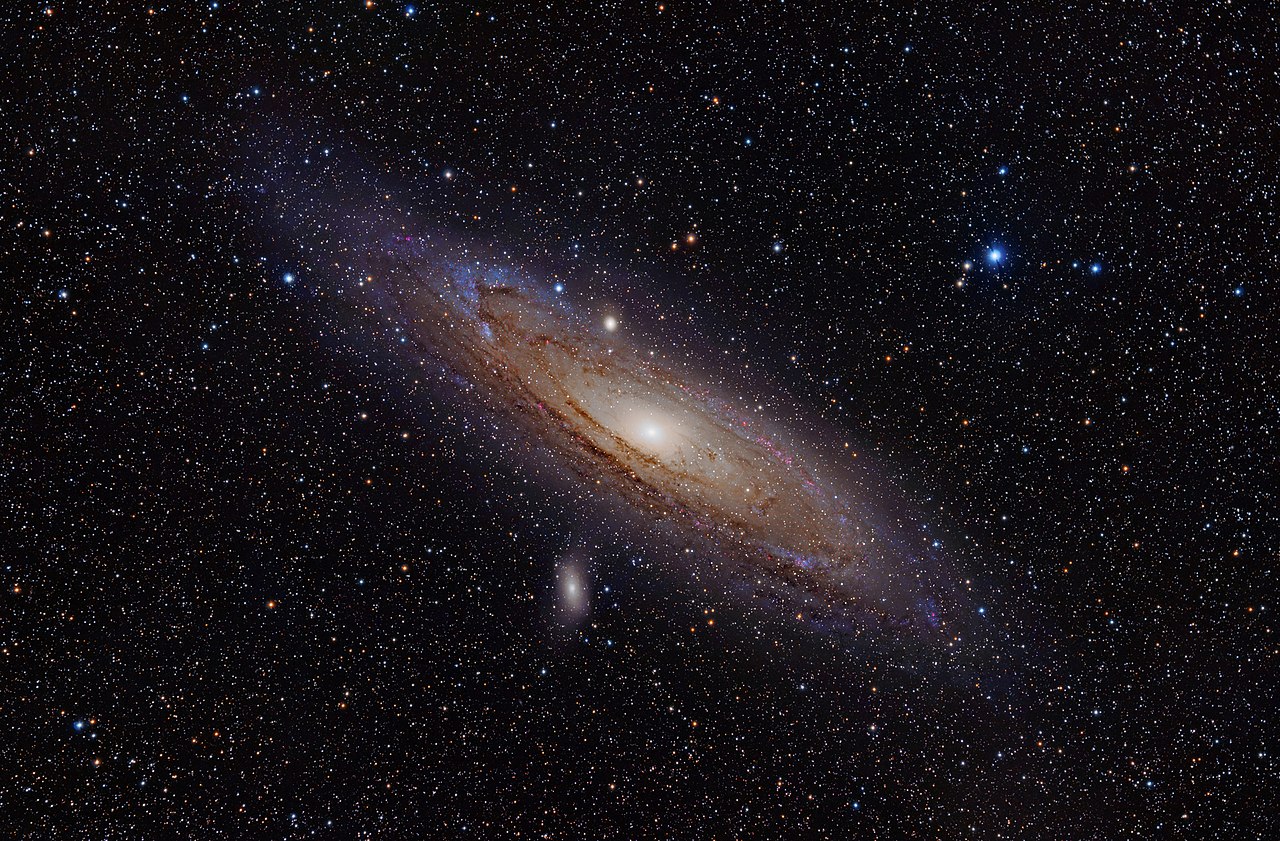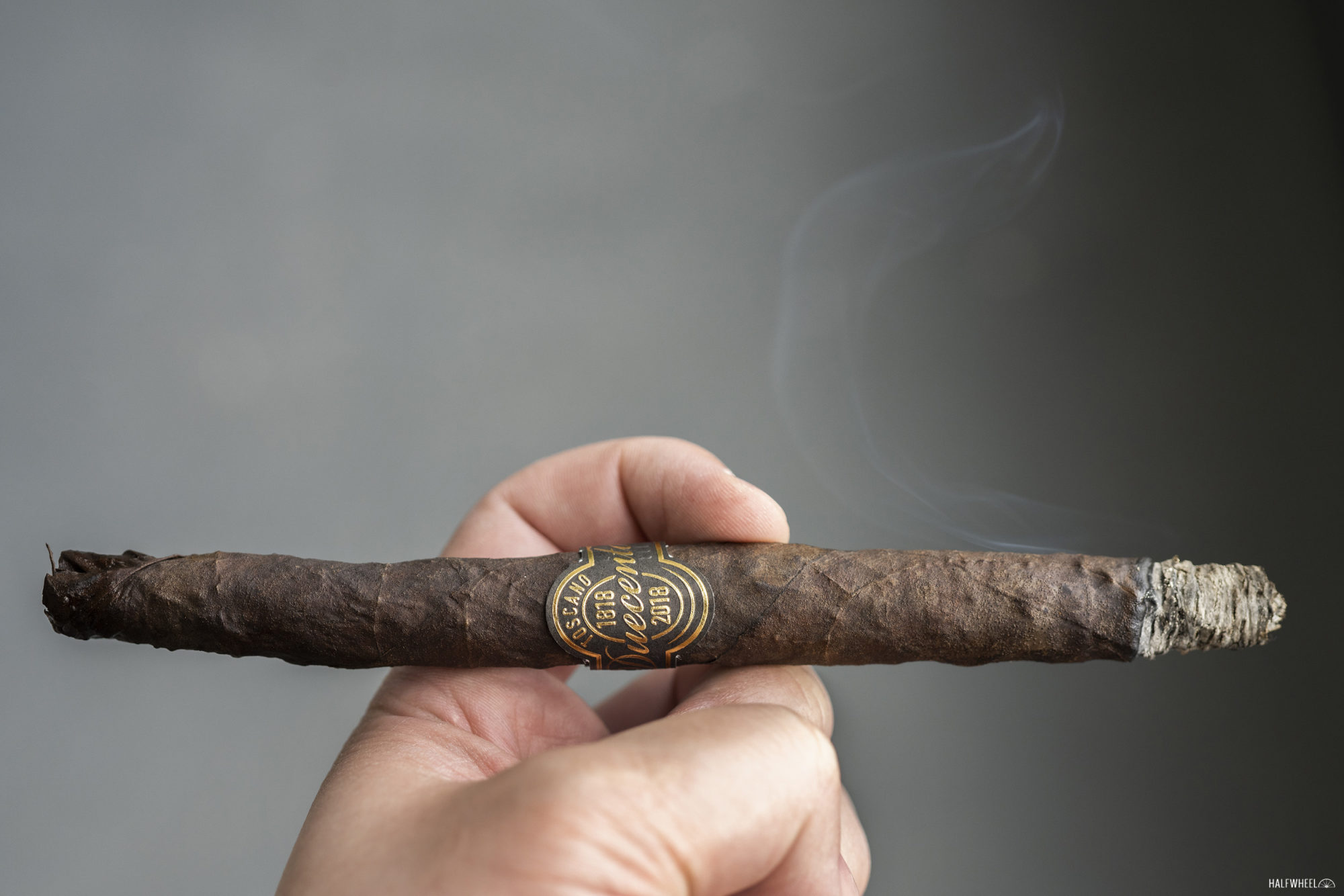shaileshs wrote: ↑Fri Jul 09, 2021 5:22 am
Red colored is because of Hydrogen, i also see greenish tinged on left side (Oxygen ?).. Yellowish/brown in middle seems to be dust and visible yellow light around disc.. What about light blue? Spiral arms ? If no, what is it ? If yes, why are they seen so hazy cloudlike w/o any recognizable shape (it's not perfectly side-on so I'm thinking with given angle, we should be able to see shape of arms to an extent) and even missing blue young hot star clusters normally seen in star forming regions in other galaxies..
Let's look at my annotations:
1) A "bubble" or bow shock front(?) probably blown by the superwind of M82.
2) Outflows of ionized red hydrogen gas from runaway star formation and supernovas in the center of M82.
3) Dust! M82 is a very dusty galaxy, because all the star formation in the center of the galaxy has created huge amounts of dust.
4) The yellow (and dust-reddened) center of M82.
5) The faintly bluish, non-starforming, mostly perfectly smooth disk of M82.
I find the "bubble" or shock front very interesting, because I haven't noticed it before. By contrast, there are huge numbers of images out there showing the outflow of ionized red hydrogen from the center of M82.
As for the dust, we often find huge quantities of dust in strongly starforming galaxies. This dust production makes these galaxies "little brothers" (or sisters) of the ultraluminous infrared galaxies that we see in the distant Universe. M82 is, at least, a LIRG, a Luminous Infrared Galaxy:
Wikipedia wrote:
Infrared galaxies appear to be single, gas-rich spirals whose infrared luminosity is created largely by the formation of stars within them.
...
LIRGs are brighter in the infrared than in the optical spectrum because the visible light is absorbed by the high amounts of gas and dust, and the dust re-emits thermal energy in the infrared spectrum.
M82 is more than three magnitudes brighter in far infrared light than in blue light (5.58 vs 9.16). In "normal" spiral galaxies with "normal" amounts of star formation, the galaxy's luminosity in the B band and in the far infrared are about equal. An example is M100, whose B magnitude is 10.1 and its far infrared magnitude is 9.7. Galaxies with relatively low amounts of star formation are brighter in the B band than in far infrared light. Two examples are M81 (7.84 in the B band and 8.6 in far infrared) and the Andromeda galaxy (4.3 in the B band and 5.6 in the far infrared).
An interesting aspect of M82 is that its star formation appears to have been almost totally quenched in the disk. All of the star formation - indeed, starburst activity - takes place in the galaxy's center. We see the disk of M82 edge on. What would it look like if we could see it more face on? In my opinion, M82 shows some similarities with the Black Eye galaxy, M64.
Note outside the center of M64 a relatively smooth population of blue stars. These stars probably belong mostly to spectral classes A and F. I'd say that the bluish disk of M82 is also dominated by stars of spectral classes A and F, which is to say that most of the light from the disk of M82 comes from stars like
Sirius and Procyon. And just as in M64, the disk of M82 is quite smooth, without star formation, and without clearly defined spiral arms.
The extreme wind from the runaway star formation in the center of M82 has probably "blown away" most of the starforming material in the disk of M82. In a few hundred million years, almost all the gas may have been blown away from the center of M82 as well, and the Cigar Galaxy will have lost its ionized hydrogen ruddy glow and become "red and dead" from old red stars.
Ann
P.S. What about the B magnitude and the far infrared magnitude of M64? Interestingly, because M64 is long past its starburst days (if it ever had any), M64 is "normal" in that its B luminosity and its far infrared luminosity are about perfectly equal: Its B magnitude is 9.3, and its far infrared magnitude is 9.2.
It's M82 that is the odd man out, with its high far infrared luminosity.
 M82: Starburst Galaxy with a Superwind
M82: Starburst Galaxy with a Superwind




